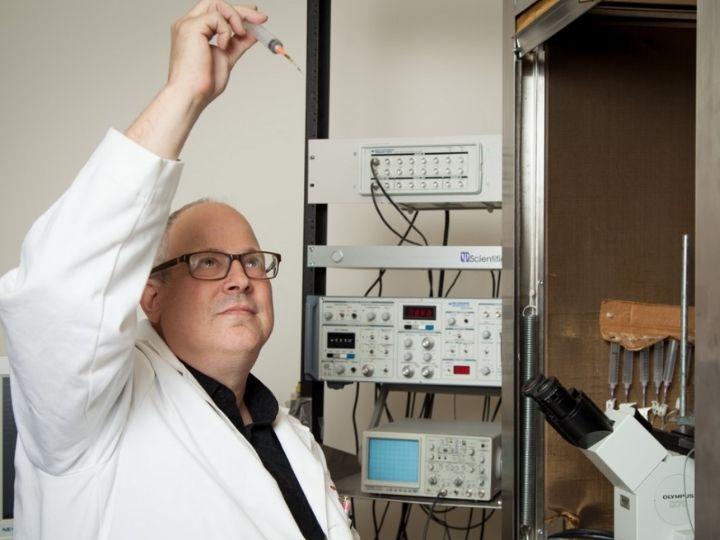University of Houston researcher tackles proteins found in disease

Credit: University of Houston
Among the primary forms of kidney disease, focal segmental glomerulosclerosis (FSGS) is the most common and is marked by high circulating levels of the suPAR protein (soluble urokinase-type plasminogen activator receptor). In the past year, high serum suPAR levels have also been found to predict kidney and multiple organ failure in hospitalized patients with COVID-19.
“FSGS is a particularly insidious kidney disease. In many patients, it inexorably leads to kidney failure and we don’t have much to offer to stop it, and worse still, in many patients it recurs after a kidney transplant, leading to failure of the transplanted kidney,” said Stuart E. Dryer, Moores Professor of biology and biochemistry, who has a joint appointment as a professor of biomedical sciences in the UH College of Medicine. Dryer is working to identify potential new therapeutic targets for chronic kidney disease, especially focal segmental glomerulosclerosis, and his first place to look is the suPAR protein.
Increased suPAR levels in blood induce oxidative stress in the glomeruli, the tiny filtering units within the kidney, and release oxygen-free radicals that attack cell membranes and disrupt ion channels, causing a rise in calcium levels inside the cell. In many conditions, high suPAR levels have bad prognostic indications.
“Basically, if you are sick and your serum suPAR levels are high, you’re in trouble,” said Dryer. To block the actions of suPAR, he is examining a drug that has already undergone clinical trials for unrelated conditions, including Alzheimer’s disease. A $1.4 million grant from the National Institute of Diabetes and Digestive and Kidney Diseases supports his work.
“It started as a very lucky guess actually, but we’ve shown it in a dish, that we can take isolated cells and if we treat them with suPAR they develop oxidative stress and if we add this drug, that doesn’t happen,” said Dryer.
Dryer’s other favorite target is an ion channel protein called TRPC6 (Transient Receptor Potential Cation Channel Subfamily C Member 6). Excessive activation of TRIPC6 causes FSGS and suPAR greatlyg increases the activity of TRPC6.
“My lab has shown the suPAR and TRPC6 are connected to one another,” said Dryer. “If you add suPAR to cells, TRPC6 becomes more active,” said Dryer. “Now we need to understand better how TRPC6 actually works in relevant kidney cells.”
###
Media Contact
Laurie Fickman
[email protected]
Original Source
https:/




